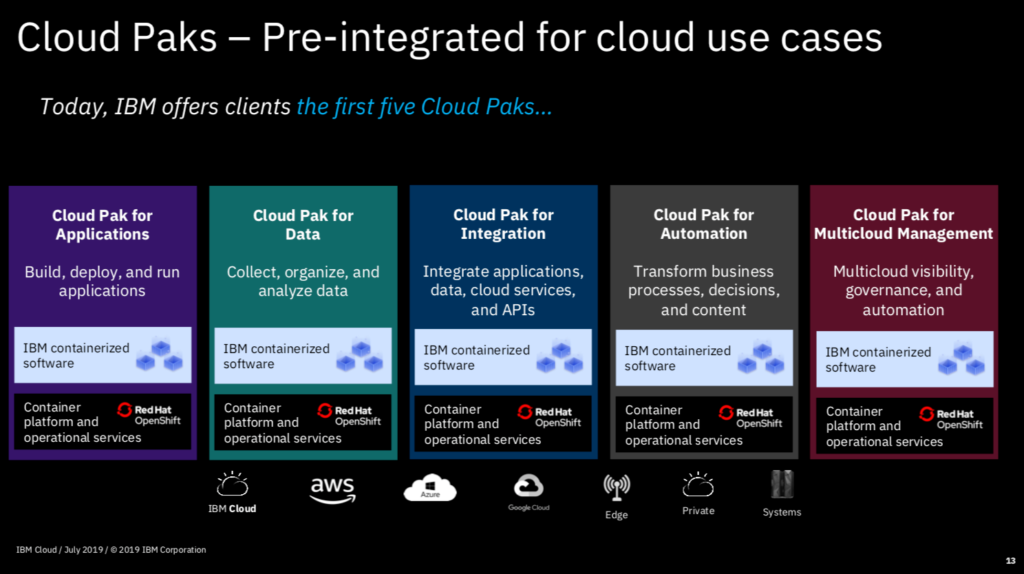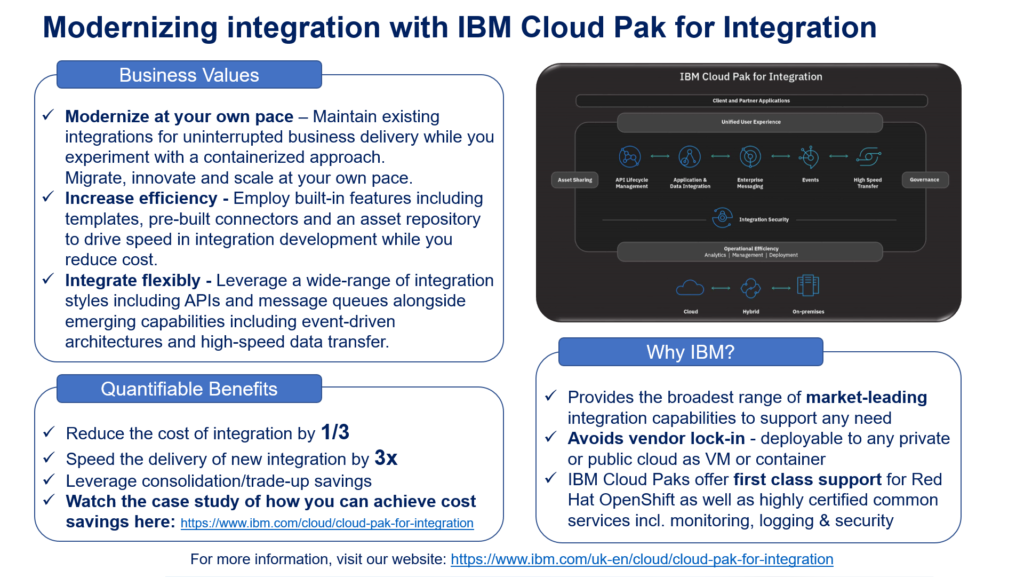
Introduction to Cloud Pak for Integration
If you are working with IBM integration products and haven’t yet delved into CP4I, then this post is for you. This is the first of a new series of blog posts that will explain what CP4I is and how you can use it to modernise your integration systems. This post will introduce some fundamental concepts of CP4I and answer common questions regarding what it is all about.
WHY CP4I?
Integration has changed and the pace of change has increased. The amount of requirements are skyrocketing, prototypes are prepared in weeks (or sometimes days), and new applications are up and running in months. As applications proliferate, we now have networks of applications using their own types of data. We have applications in local environments, partner environments, as well as software-as-a-service (SaaS) applications that spread data across a much broader landscape.
To build connected customer experiences, gain customer insights, maintain competitive advantage, or even just to meet demand, these new applications (and all of their data), must be injected back into existing business processes. With the need to connect all of these applications, data, and devices, integration has become increasingly complex.
Within a rapidly changing environment, application development techniques have adapted by introducing new approaches such as microservices. Modern integration borrows this technique and is maturing towards the same API-led approach where we can distribute communication contracts and enable teams to rapidly share data and functions. CP4I focuses on the technology that empowers this modern integration journey. The journey embraces agile integration and API-led approaches to allow organisations to build autonomous teams that can self-provision integration solutions and modernise at their own pace.
WHAT IS CP4I?
CP4I is made up of everything you need for modern agile integration inside a single containerised platform. It provides API management, application & data integration, messaging & events, high-speed data transfer, and integration security.

If IBM API Connect, App Connect Enterprise, MQ, Event Streams, or DataPower sound familiar to you, rest assured there are pre-built catalogue templates that will allow you to easily consume these capabilities.

WHAT ARE THE BENEFITS OF CP4I?
CP4I allows you to modernise your integration systems and adopt cloud-native principles to provide greater speed, flexibility, and digital readiness. The diagram below lists some of the business values it provides and some quantifiable benefits.

SOME ADDITIONAL FEATURES OF CP4I INCLUDE.
- Enterprise-grade security and scalability
- Integrated management dashboard
- Unified monitoring and management
- Asset sharing and collaboration
- Prebuilt connectors to speed integration creation
- Deep transactional insight with end to end tracing across the platform
- No code integration (create an API in minutes)
WHY CONTAINERISE?
Container applications provide portability and flexibility. They are separate from the underlying operating system and the physical hardware does not matter. They can be run on a local laptop, an on-premises server, a hybrid cloud environment, the public cloud, or even a multi-cloud environment. Containers have proven to save development time giving you a faster deployment cycle. They let you deploy quickly and update things faster when they break.
SO WHERE DO I START?
With experience implementing and migrating integration solutions across a range of industries, Syntegrity can help ease the pain with modernising your integration systems.
Across multiple cloud environments, CD/CI practises, infrastructure, security and integration, Syntegrity is the company you need to help start your CP4I journey.
Get in contact to book a workshop to see how Syntegrity can help you.
WHERE CAN I GET MORE INFORMATION ON CP4I?
For more great information you can use the links below.